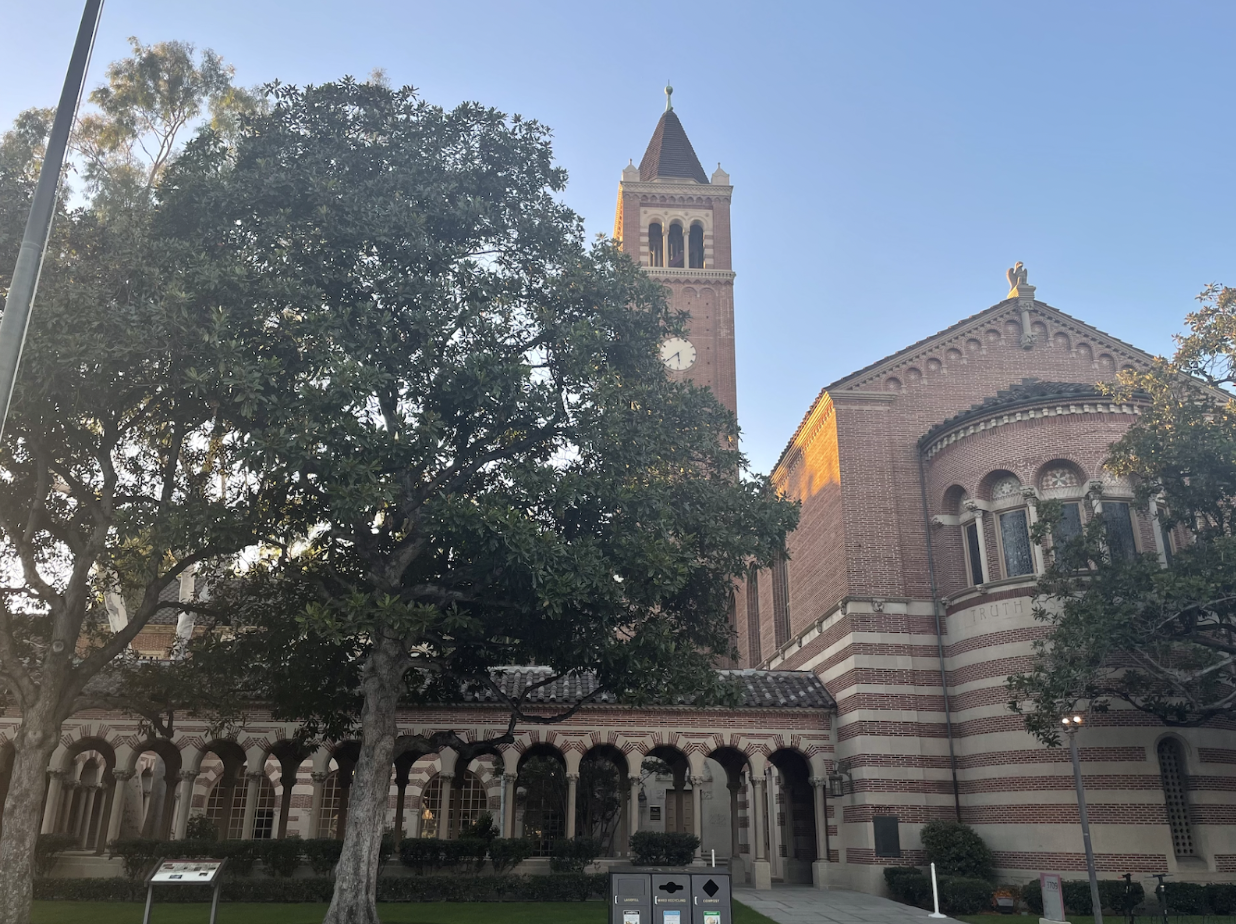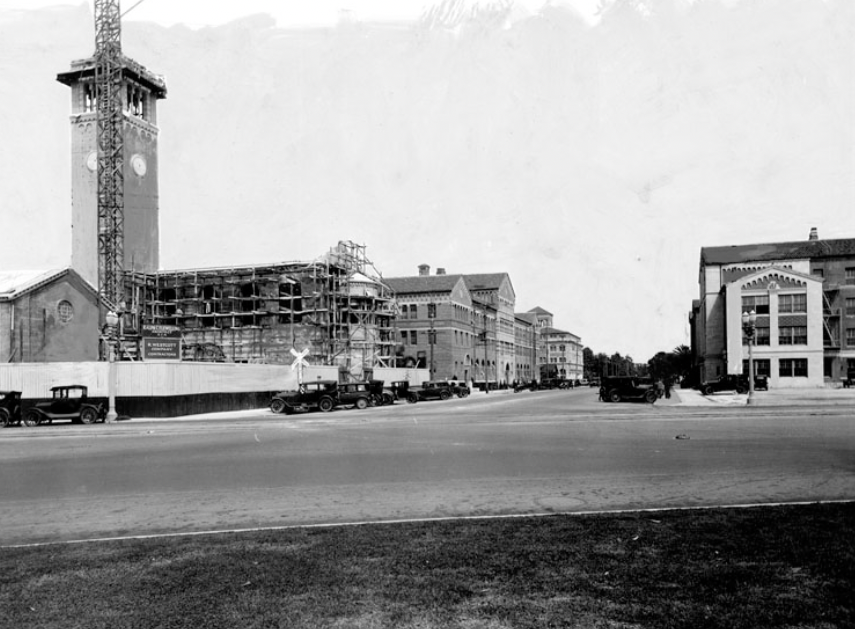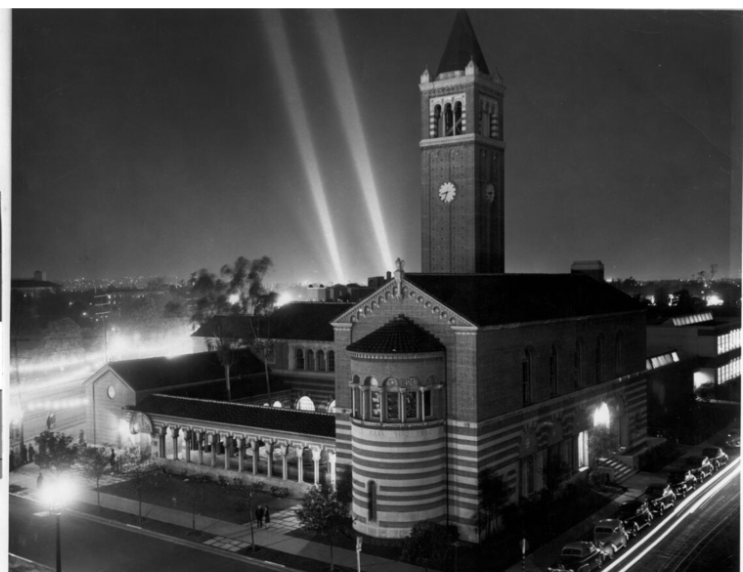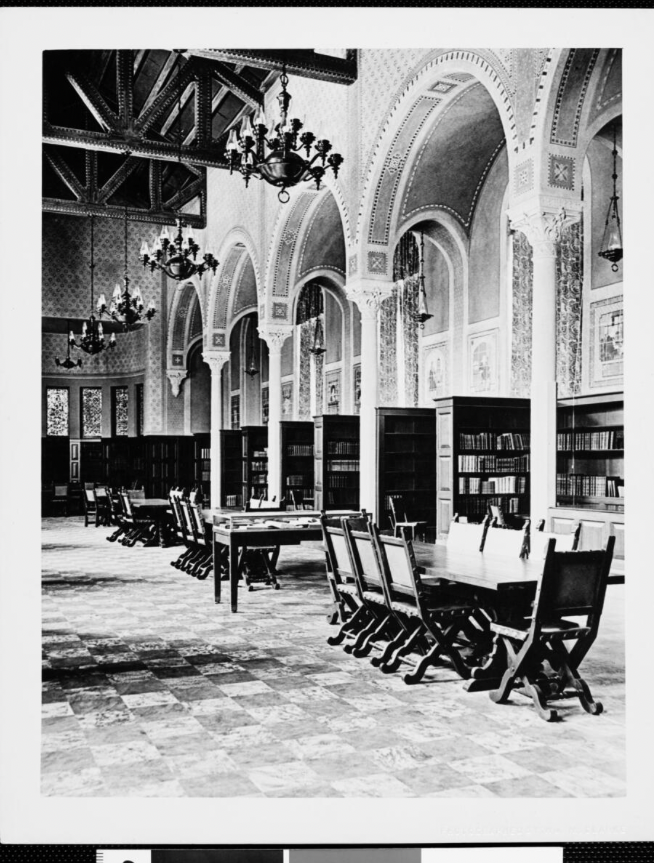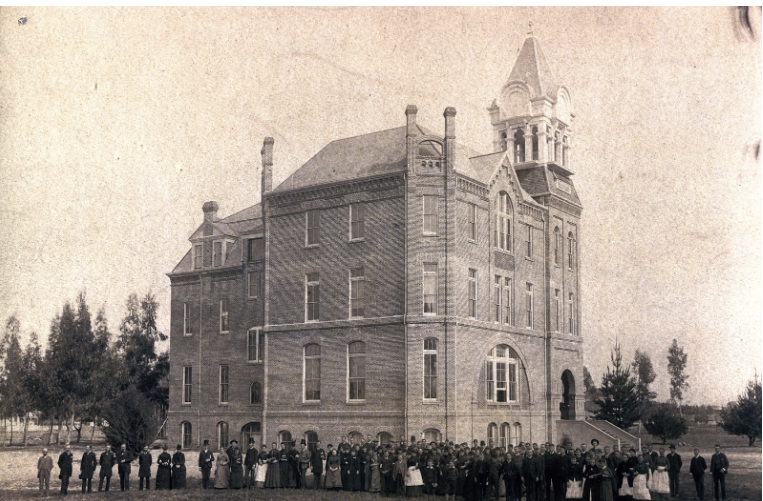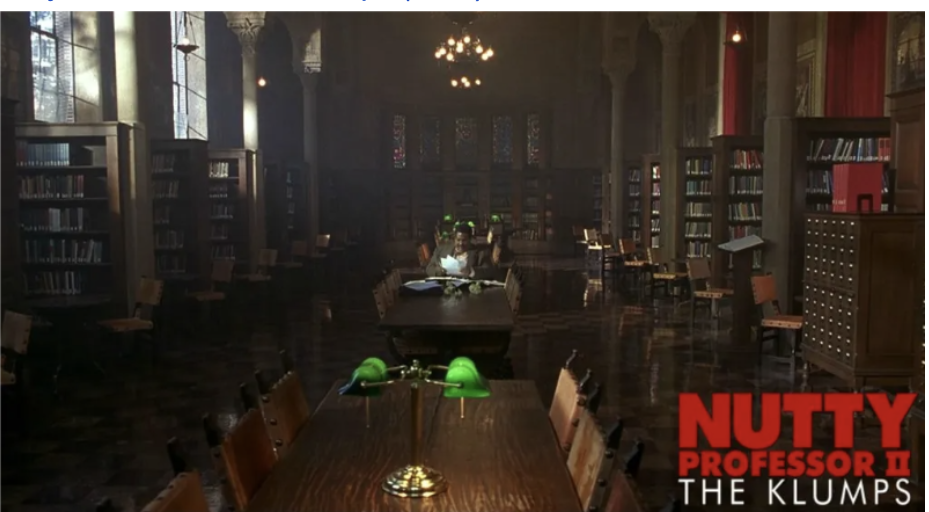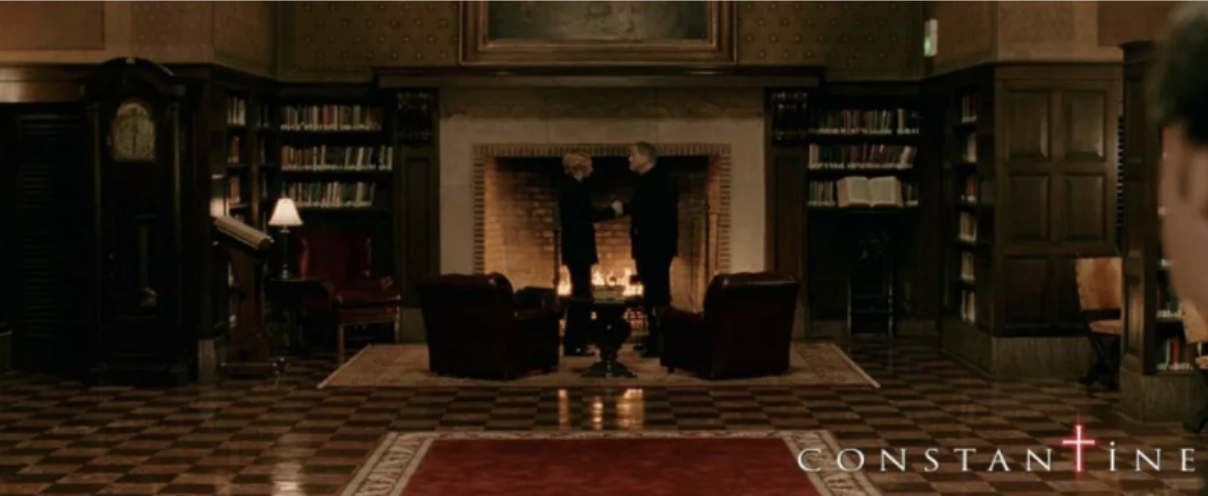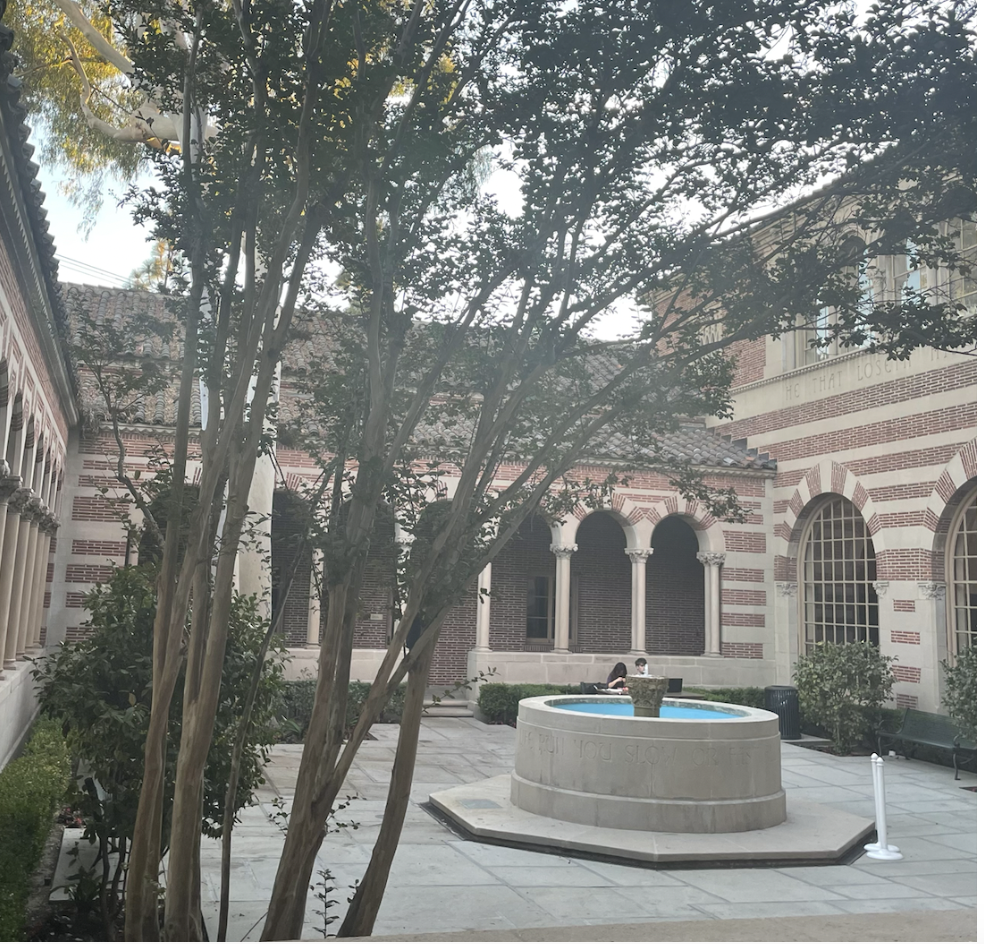History and Hidden Stories of USC: A Glimpse into the History of Mudd Hall
by Ani Antonyan ‘24
As students, it's easy to walk past the historic buildings that have been on campus for over a century without noticing them. USC, founded way back in 1880, has a deep history hidden within its grounds. We often forget to be curious about the people, events, and changes that have shaped our campus; yet, there is so much left to uncover.
To bridge that gap between past and present, I turned to the incredible USC Digital Library database to find pictures of the past that reveal the evolution of our university. It was interesting to compare life on campus in the past, long before Panda Express and Starbucks, to today.
In this journey of immersing myself into the history of campus, I decided to peel back the layers of one of the oldest buildings on campus, Mudd Hall. Located on the southernmost edge of USC’s campus, Mudd Hall of Philosophy (MHP) is one of the most iconic buildings on campus. If you've ever been to Mudd Hall, you know that it's a unique building with a magical feel. It’s the backdrop of LinkedIn headshots, graduation pictures, and visits to the Hogwarts-like library. Mudd Hall’s rich and storied history reflects the growth and evolution of USC.
Origins
Built in 1929, the Seeley W. Mudd Hall of Philosophy was named in honor of Seeley Wintersmith Mudd, a U.S. Army Colonel and renowned mining engineer. Mudd played a significant role in funding this impressive building, with the construction costs estimated to be $300,000.
Driven by his passion for philanthropy and education, Mudd generously contributed to USC, Pomona College, and various other schools. His dedication to giving back translated to his sons who carried on his legacy at USC and beyond. One of Mudd’s sons, Seeley Greenleaf Mudd, was the Dean at the USC School of Medicine and has the SGM building on campus named after him.
Design and Construction
Mudd Hall of Philosophy was designed by architect Ralph Carlin Flewelling. Once the building was constructed, his father, Dr. Ralph Tyler Flewelling, became the Director of the School of Philosophy and the first the preside over the new building. The two-story building is a unique blend of architectural styles, primarily pre-Renaissance Tuscan with elements of Romanesque, Byzantine, and Middle Eastern decorative details.
As you approach Mudd Hall, there’s an impressive number of distinctive features, such as its intricate stone carvings, a 146-foot tall clock tower, a central fountain surrounded by benches, and, most impressive of all, its hidden details. Have you ever noticed the decorative stone figure holding a lamp over the south entrance representing the Greek philosopher Diogenese looking for an honest man?
When Mudd Hall first opened its doors on June 5, 1930, it originally housed three classrooms, a room for the Philosophy Club (The Argonauts’ Hall, which is now a classroom), a large lecture hall (the current main lecture room, the Borden Parker Bowne Hall), and faculty offices. But here’s the cool part – it also had a rare book room and a book bindery! Now, the rare book room and book bindery have been converted into classrooms and offices.
Hoose Library of Philosophy
One of the main highlights of Mudd Hall is the James Harmon Hoose Library of Philosophy. Besides resembling the set of Harry Potter, the library is an integral part of USC’s history, considering it’s the school’s oldest library. The library is named after USC’s first philosophy professor, James Harmon Hoose. James Harmon Hoose was also the first director of the School of Philosophy when the department was located in the Bovard Administration Building.
Located on the second floor of the building, the magnificent library has arched columns, high ceilings, and multiple stained-glass windows that allow natural light to shine in that brings a welcoming feeling to the library. Along the walls are twenty-two mosaic portraits that are meant to depict different philosophers and ideas from Ancient Greeks through the 19th Century.
The library’s supply of books grew out of a small collection kept in the College of Liberal Arts building, known as the “Old College.” Built in 1887, it was the second building on USC’s campus. The Old College was where students went for most of their classes. After its demolition in 1948, its collection of books was transferred to the newly constructed philosophy library.
Dr. Ralph Tyler Flewelling played an integral role in supplying the library with its unique subject matter and inscriptions. Flewelling had a mission to fill the Hoose Library collection with rare books and incunables (books that were printed before 1500). In 1976, Head of the Hoose Library, Wallace Nethery, wrote Dr. Flewelling and Hoose Library: Life and Letters of a Man and an Institution. This book documents the life of Dr. Flewelling and the history and growth of the Hoose Library. Nethery worked to continue Dr. Flewelling’s mission of building the Hoose Library’s collection.
In the Present
Mudd Hall has experienced many eras of our university, allowing its architectural and historical significance to still be recognized today. The building went through extensive structural and decorative restoration in 2003, earning a Los Angeles Conservancy Preservation Award in 2004. Since 2013, Mudd Hall has held the designation of a City of Los Angeles Historic-Cultural Monument.
Library by day, Hollywood set by night – the Hoose Library of Philosophy in Mudd Hall has served as the set of various films. While primarily a sanctuary of knowledge and studying, its charm has not gone unnoticed. Here’s a few of its most popular appearances.
Escape From New York (1981)
Nutty Professor II: The Klumps (2000)
Constantine (2005)
As you walk through Mudd Hall, you will see a place where past meets the present, and echoes of history are in every corner.
So, as you navigate Mudd Hall to get to class or study at the beautiful library, remember that you are an integral part of an ongoing and ever evolving story that continues to unfold today.
Want more from Trojans 360?
Visit Trojans 360 on Facebook & Twitter to stay up to date with more student content! You can also Ask A Trojan an anonymous question, and we’ll try to answer it in a future post. And don’t forget to follow us on Instagram!
Trojans 360 is USC’s official student-run blog. Content created by students, for students.

